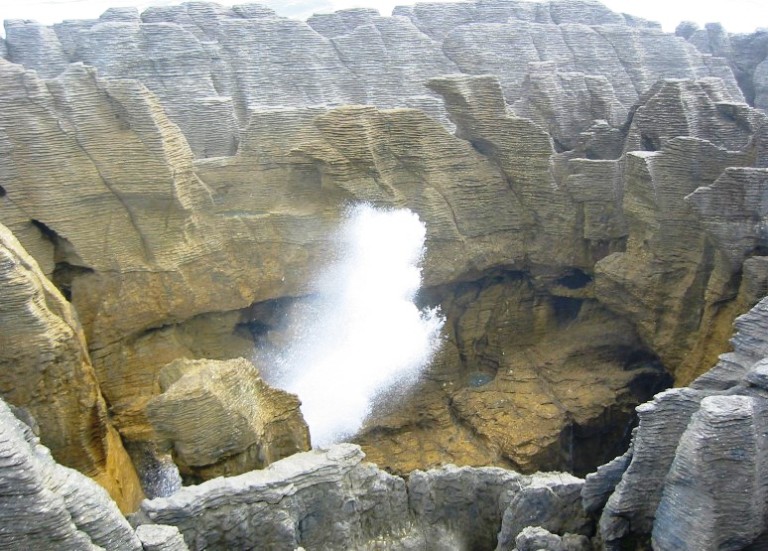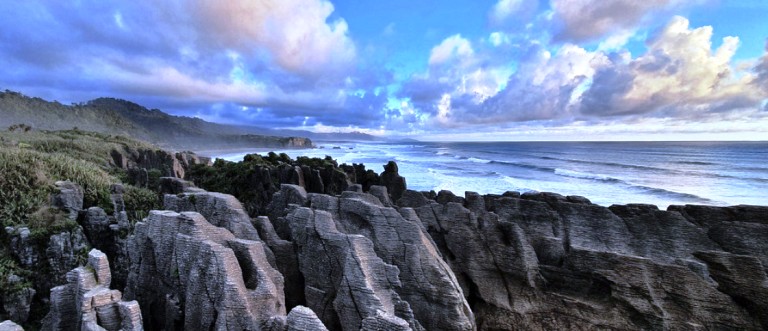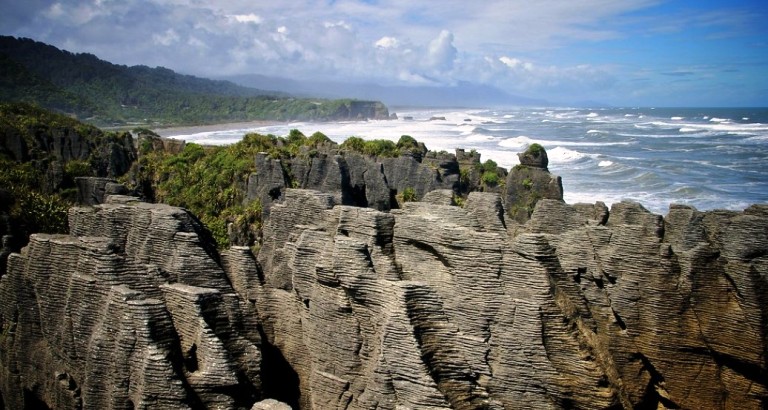A limestone area near Punakaiki called Pancake Rocks suffers from heavy erosion and has several vertical blowholes created by the sea. Among the amazing things about New Zealand are its ever-changing landscapes and diverse natural phenomena. Nature is the world’s greatest artist as it sculpted this heavily eroded limestone area more than 30 million years ago.
As the rain created vertical air shafts in some parts of the cliffs, the pounding ocean created horizontal tunnels in others. There are a number of factors that affect the level of activity of the blowhole, such as the tide, the sea conditions, and the geometry of the caverns.
As the name suggests, the Pancake Rocks are composed of thin layers of limestone piled on top of one another like pancakes. The skeletons of these creatures formed millions of years ago and have been weathered, but no one knows exactly how they got their shape.
A deep seabed about 2 km below the surface formed the foundations of the Pancake Rocks. They solidified under intense pressure into layers of more resistant limestone and thinner, mud-rich layers. The softer layers of limestone were gradually eroded by water, wind, and salt spray as seismic activity raised the limestone above the seabed. Several vertical air shafts and horizontal tunnels were weathered by the rain, creating the Blowholes. High tide creates a geyser-like effect by forcing water to flow through the tunnels and up the shafts.
When these marine organisms died, their shells settled on the sea floor along with small amounts of sand and mud eroded from nearby islands, which contributed to the rich abundance and diversity of marine organisms in these waters. A thick deposit of nearly pure calcium carbonate was formed on the sea floor over millions of years as a result of vast quantities of shell debris accumulating on the sea floor.
The Maoris once called Punakaiki “a spring of food” because of the abundance of vegetation that lines the roadsides and surrounds the houses of the town, located on the edge of Paparoa National Park. High tide is the most suitable time to visit the rocks, according to the guide. Dead marine life particles formed a thick layer on the seabed two kilometers beneath the surface, where they were solidified by enormous water pressure and became limestone.
Through the rock formations are several walkways that lead to the site. There are sections of these that are accessible to wheelchairs and other sections that are carved into stairways for easy access. It takes 15 minutes to circle the coastal promontory of Pancake Rocks, or as long as you want, to gaze into the enchanting surge pool (known as the Devil’s Cauldron), watch the blowholes in action, or take in the views of the Paparoa National Park coastline. You should visit Pancake Rocks at least once while in New Zealand, and it is a welcome stop if you drive long distances on a daily basis.







